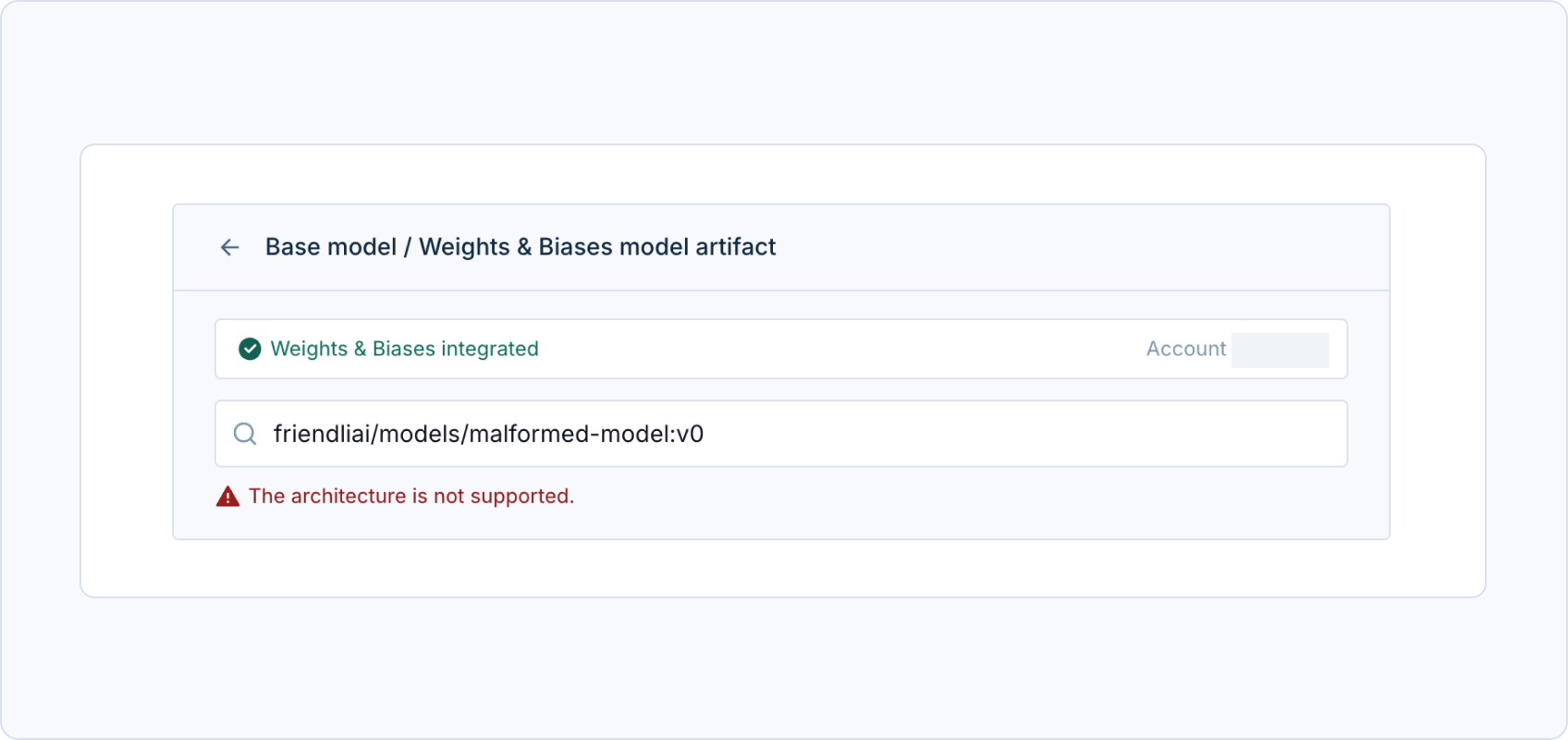Integrations
How do I integrate a Hugging Face account?
How do I integrate a Hugging Face account?
- Log in to Hugging Face, then navigate to Access Tokens.
- Create a new token. You may use a fine-grained token. In this case, please make sure the token has view permission for the repository you’d like to use.
- Integrate the key in Friendli Suite → Personal settings → Integrations.
How do I integrate a W&B account?
How do I integrate a W&B account?
- Log in to your W&B account at the authorization page, then navigate to User Settings, and scroll to the API Keys section.
- Acquire a token.
- Integrate the key in Friendli Suite → Personal settings → Integrations.
Using 3rd-party model
How can I use a W&B artifact as a model?
How can I use a W&B artifact as a model?
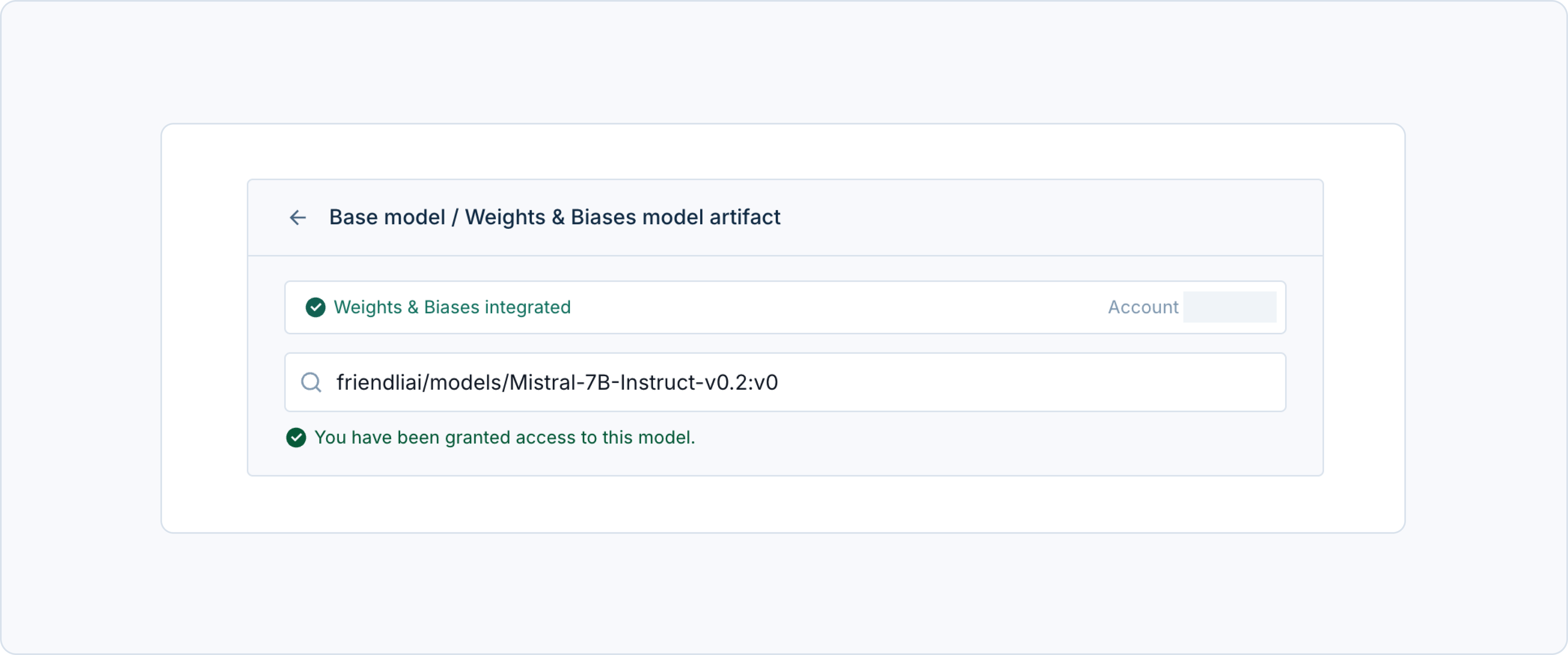
- Make sure to use the full name of the artifact.
-
The artifact name must be in the format of
org/project/artifact_id:version
How can I upload a safetensors model to W&B using the CLI?
How can I upload a safetensors model to W&B using the CLI?
- Install the CLI and log in with your API key. See the W&B CLI documentation for details.
- Upload the model as a W&B artifact using the command below:
-
With all this, the W&B artifact will look like this:

How can I use a Hugging Face repository as a model?
How can I use a Hugging Face repository as a model?
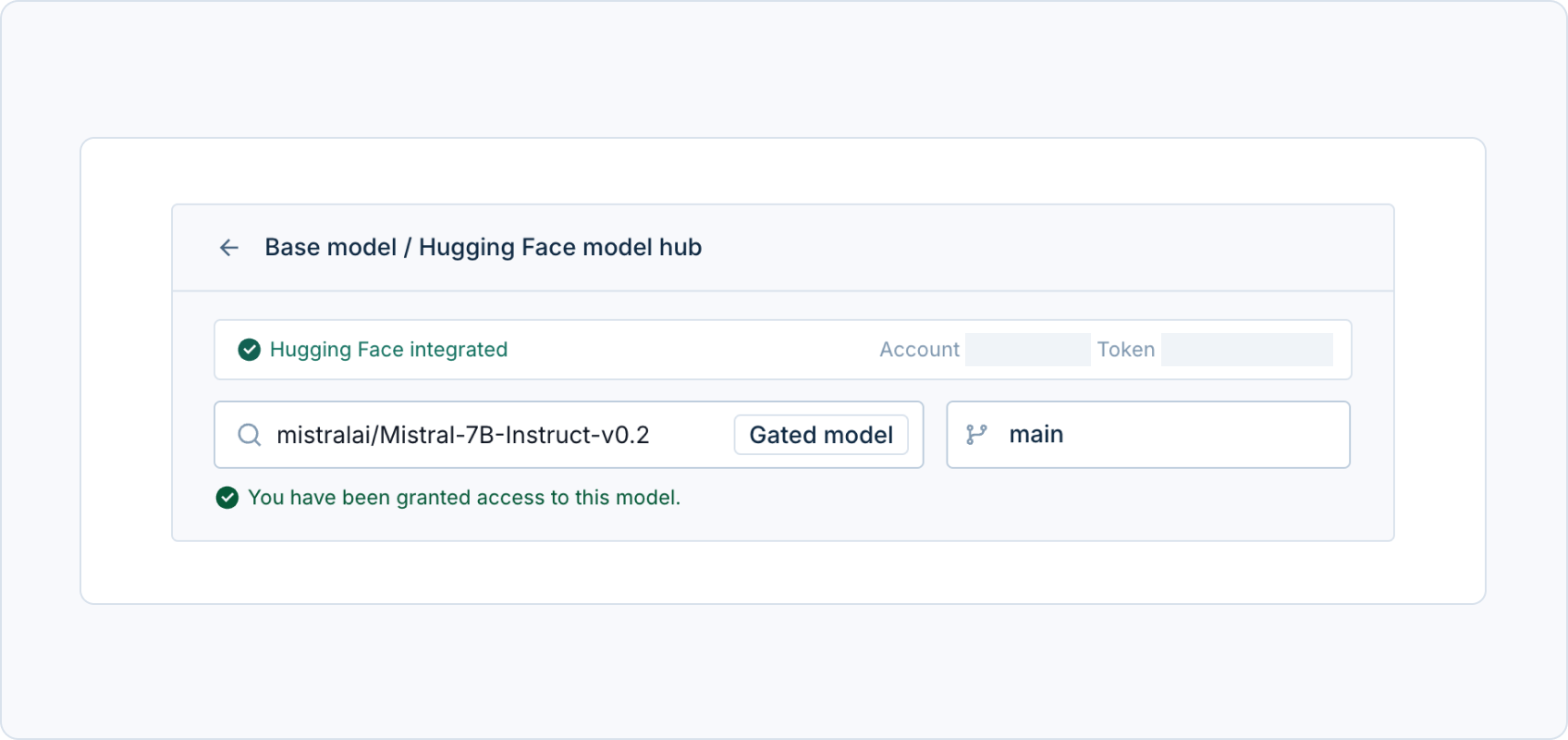
- Use the repository id of the model. You may select the entry from the list of autocompleted model repositories.
- You may choose specific branch, or manually enter a commit hash.
Format Requirements
What are the format requirements for a model?
What are the format requirements for a model?
- A model should be in safetensors format.
- The model should NOT be nested inside another directory.
- Including other arbitrary files (that are not in the list) is totally fine. However, those files will not be downloaded nor used.
| Required | Filename | Description |
|---|---|---|
| Yes | safetensors | Model weight, e.g. model.safetensors. Use model.safetensors.index.json for split safetensors files |
| Yes | config.json | Model config that includes the architecture. (Supported Models on Friendli) |
| No | tokenizer.json | Tokenizer for the model |
| No | tokenizer_config.json | Tokenizer config. This should be present & have a chat_template field for the Friendli Engine to provide chat APIs |
| No | special_tokens_map.json |
What are the format requirements for a dataset?
What are the format requirements for a dataset?
- The dataset must contain a column named “messages”.
- Each row in the “messages” column should be compatible with the chat template of the base model.
For example,
tokenizer_config.jsonofmistralai/Mistral-7B-Instruct-v0.2is a template that repeats the messages of a user and an assistant. Concretely, each row in the “messages” field should follow a format like:[{"role": "user", "content": "The 1st user's message"}, {"role": "assistant", "content": "The 1st assistant's message"}]. In this case,HuggingFaceH4/ultrachat_200kis a dataset that is compatible with the chat template.
Troubleshooting
Inference Request Errors
Common error codes for inference requests
Common error codes for inference requests
| Code | Name | Cause | Suggested Solution |
|---|---|---|---|
400 | Bad Request | The request is malformed or missing required fields. | Check your request payload. Ensure it is valid JSON with all required fields. |
401 | Unauthorized | Missing or invalid API key. The request lacks proper authentication. | Include a valid Friendli token in the Authorization header. Verify the token is active and correct. |
403 | Forbidden | The API key is valid but does not have permission to access the endpoint. | Ensure your token has access rights to the endpoint. Use the correct team token or add the X-Friendli-Team header if needed. |
404 | Not Found | The specified endpoint or resource does not exist. This typically occurs when the endpoint_id or team_id is invalid. | Verify the endpoint_id and model name in your request. Ensure they match an existing, non-deleted deployment. Also check for typos in your endpoint ID or team ID. |
422 | Unprocessable Entity | The request is syntactically correct but semantically invalid (e.g. exceeding token limits, invalid parameter values). | Adjust your request (e.g. reduce max_tokens, correct parameter values) and try again. |
429 | Too Many Requests | You have exceeded rate limits for your plan. | Reduce request frequency or upgrade your plan for higher limits. Wait before retrying after a 429 error. |
500 | Internal Server Error | A server-side error occurred while processing the request. | Retry the request after a short delay. If the error persists, check endpoint health in the overview dashboard or contact FriendliAI support. |
Quick checklist before retrying
- Verify the endpoint URL,
endpoint_id, and (if applicable)X-Friendli-Teamheader - Include the
Authorizationheader with a valid token - Confirm the target deployment exists, is healthy, and is not deleted
- Validate request JSON and required fields; reduce
max_tokensif needed - Check rate limits; add retry with backoff when receiving
429
Model Selection Errors
Can't access the W&B model artifact
Can't access the W&B model artifact
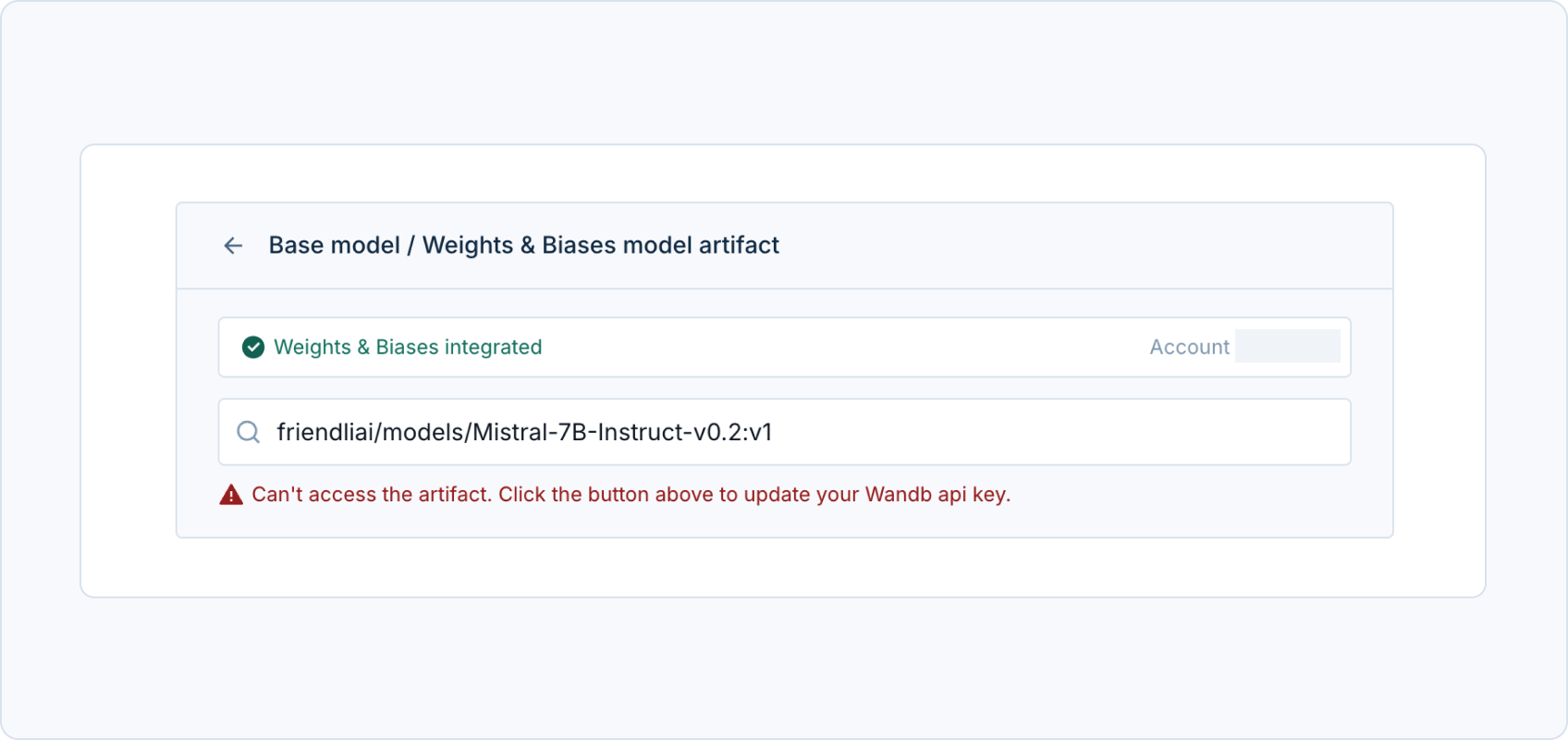
You don't have access to this gated model
You don't have access to this gated model
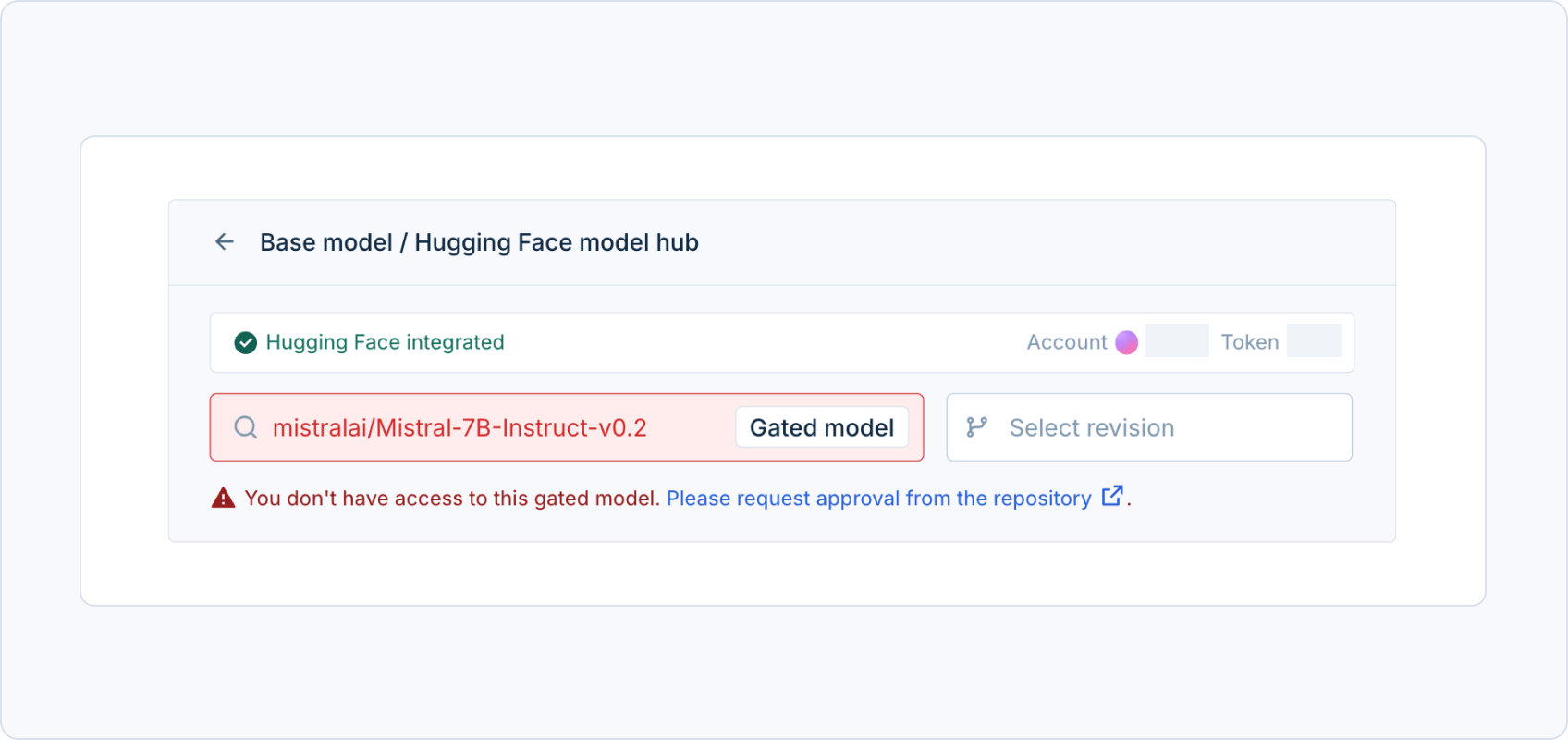
The repository / artifact is invalid
The repository / artifact is invalid

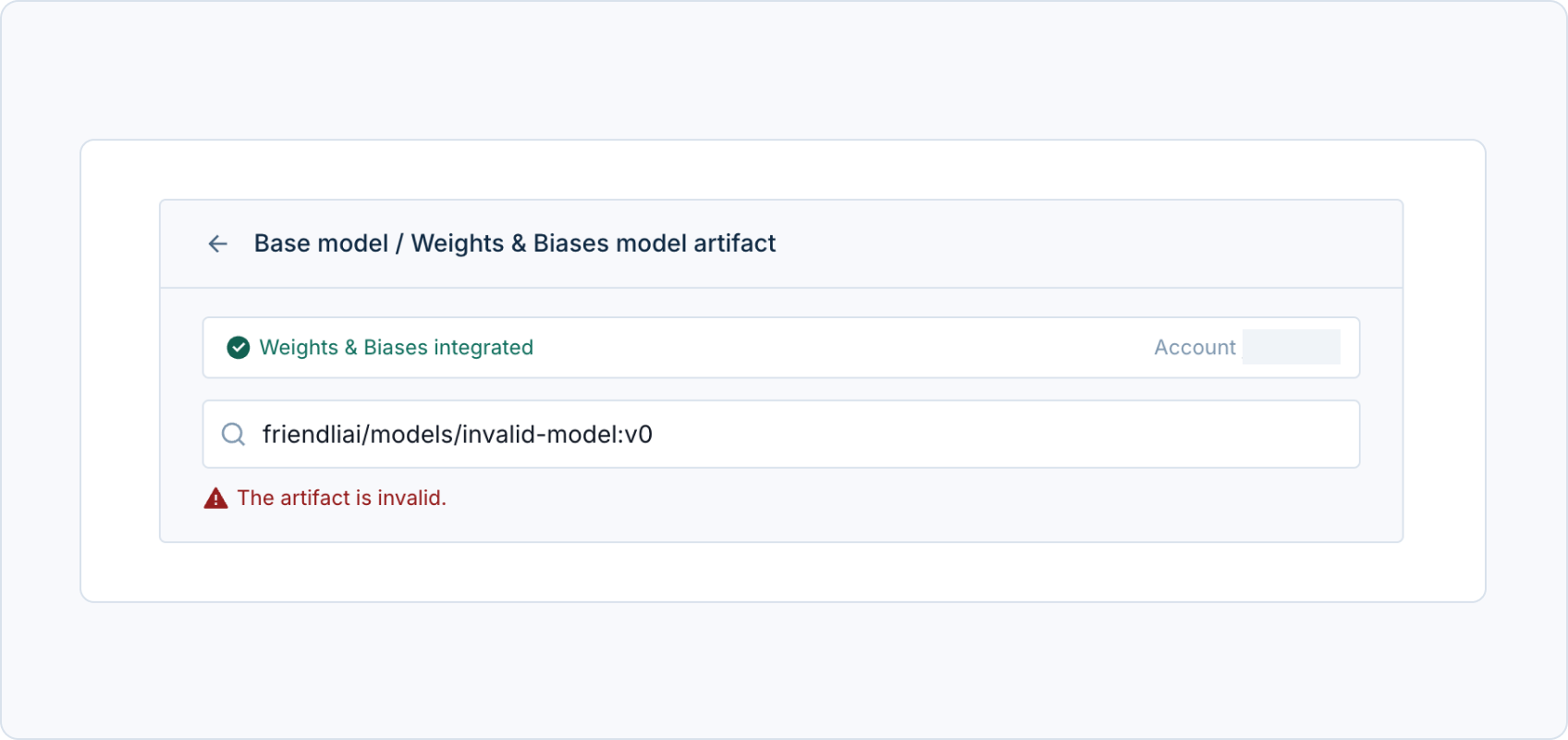
The architecture is not supported
The architecture is not supported
